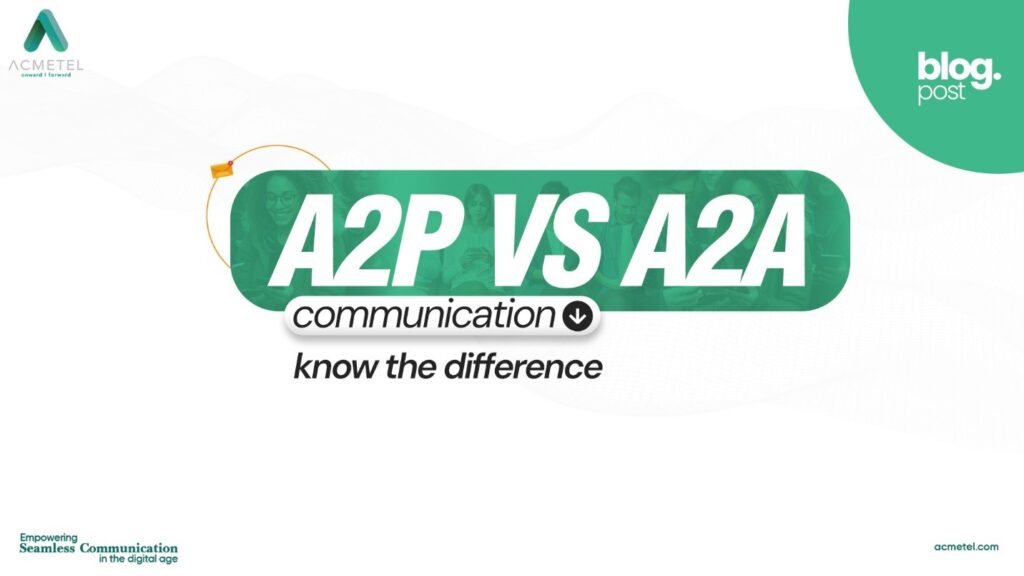A2P and A2A Communication
A2P or Application-to-person messaging signifies a communication method businesses use to send SMS messages to individuals, like customers. For example, a bank might utilize A2P messaging to inform its clients about account balances or notifications of pending transactions. Meanwhile, A2A, also known as application-to-application, represents businesses’ messaging approach to exchange SMS messages exclusively between their own software applications. For instance, a retail company might deploy A2A messaging to relay immediate inventory updates to its point-of-sale system.
Role of A2P and A2A in Telecom Sector
In the telecommunication industry, A2P and A2A messaging hold immense significance due to their diverse and essential contributions.
A2P messaging is essential as it enables businesses to enhance the customer experience. For example, it facilitates the delivery of automated appointment reminders, contributing to heightened customer satisfaction. Telecom operators can strengthen their revenue streams and foster positive client relationships.
On the other hand, A2A messaging is equally vital as it facilitates the seamless exchange of real-time data between various systems. This operational efficiency boost translates into cost savings for businesses. Different software applications can streamline processes by communicating efficiently, and resource utilization is optimized.
As the telecom industry evolves, A2P and A2A messaging will become increasingly essential. These messaging technologies are instrumental in helping businesses elevate customer service standards, drive revenue growth, and trim operational expenses. Their adaptability and utility make them indispensable tools in the ever-changing telecom landscape.
Difference between A2P and A2A

There are three distinct differences between A2P and A2A messaging.
1: Regulatory Compliance:
- A2P Messaging: It is subject to stringent regulatory compliance due to its use for consumer messaging, necessitating adherence to laws against spam and unwanted messages.
- A2A Messaging: Generally, it faces less stringent regulatory scrutiny as it mainly involves communication between applications within a controlled system.
2: Cost Efficiency:
- A2P Messaging: This tends to be more expensive as it relies on dedicated network infrastructure.
- A2A Messaging: Often more cost-efficient, as it can leverage the internet for communication, reducing infrastructure costs.
3: Delivery Speed:
- A2P Messaging: Typically, it is slower in delivery, as messages pass through various systems before reaching the recipient.
- A2A Messaging: Offers quicker delivery, often allowing direct communication between applications within the same system, avoiding intermediaries.
In a Nutshell!
A2P messaging improves customer experiences and strengthens revenue streams by enabling direct engagement with consumers, while A2A messaging streamlines data flow among systems, driving cost efficiencies and operational finesse. Furthermore, distinctions in regulatory adherence, cost considerations, and delivery speed emphasize their unique attributes and utility.
As the telecommunications landscape continues to evolve, both A2P and A2A messaging will remain essential tools for businesses aiming to uplift service quality, increase revenues, and optimize operations, firmly establishing their significance in this dynamic industry.








